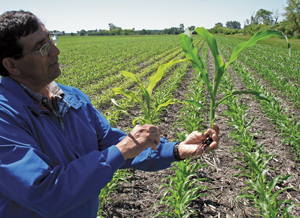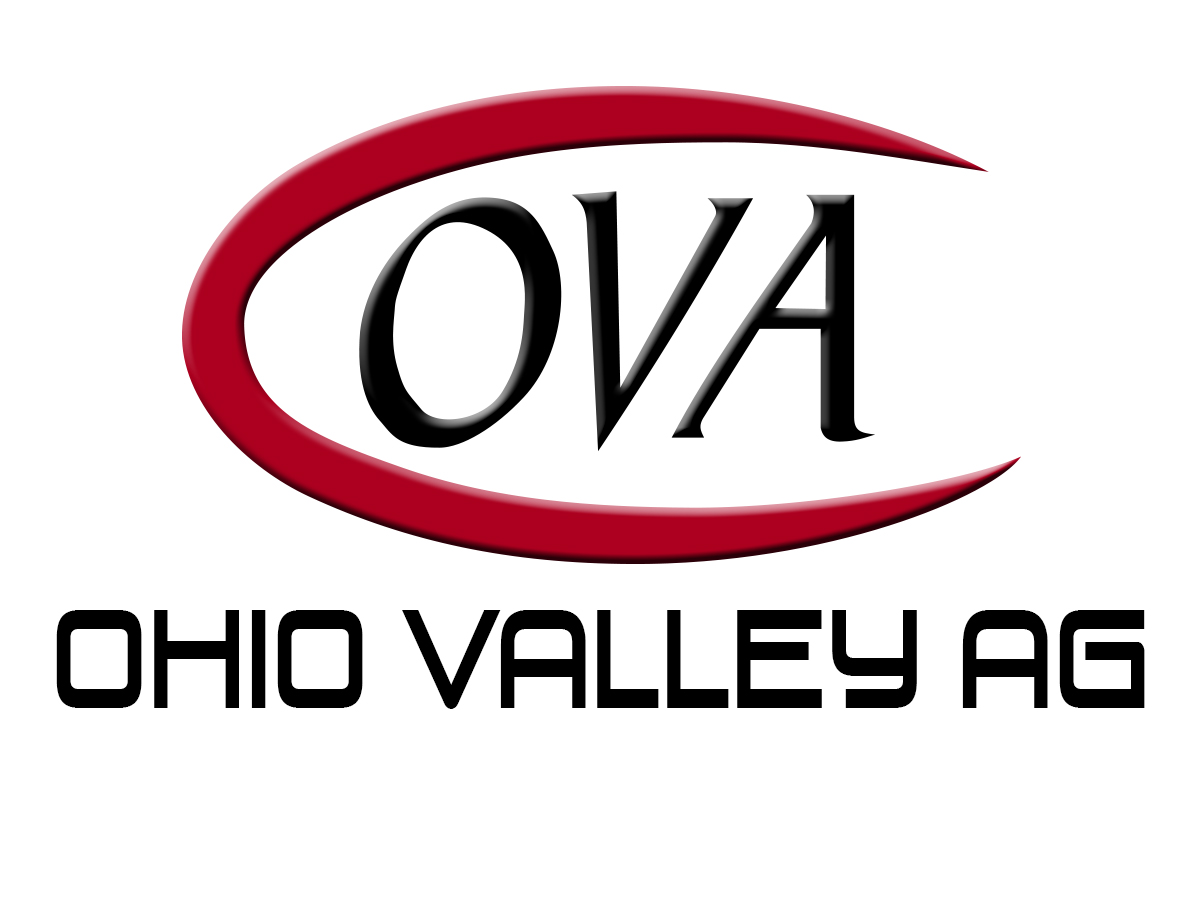By Lisa Heacox |
At presstime, dealers were using a host of glowing terms to describe this year’s crops, some of which included “tremendous,” “explosive,” and “utopia.” Indeed, one Indiana retailer cited his region’s “perfect” weather for a harvest that’s “the best we’ve ever had.”
While such banner crops are good news, they’re also expected to impact this fall’s fertilizer season.
For one thing, before too long, transporting near-record harvests will tie up barge and rail traffic at a time when fertilizer shipments need to be making their way to terminals. Then too, the question arises of whether there are “going to be enough trucks and time to get products in place,” says Ron Milby, executive director of agronomy marketing with GROWMARK.
If fields stay green longer than usual, dry-down, harvest — and ultimately fall fertilizer application — in some areas may be delayed, putting “a lot more pressure” on the system as well. “We’re going to try and move as much product as we can and hopefully members will take product as quick as they can, just to get prepared for fall,” says Milby.
At presstime, dealers were looking to stock warehouses, with delivery of product two to three weeks behind. “We had a really good spring, and everybody was dry, empty. Trying to get this stuff back in has been kind of tough because of logistics,” says Milby.
“For us to feel secure, we want to go ahead and get what we can, get a large portion of what we’re going to use,” anotherCropLife 100 retailer added. Because refill tonnage may be more difficult to find, he will be glad to find 75% to 80% of full volumes.
Such a great corn crop could also lower commodity prices and — mean fewer acres planted next year. Growers may be wavering in their fertilizer buying. “Depending on the crop and where growers are at, if they have money to spend, you’ll get a lot of them waiting until the last minute to make some fertilizer decisions,” he adds.
It’s still too early to tell if many growers will be shifting corn acres to other crops, say our dealer contacts. Growers often wait until late in the game to make those decisions as well.
“They can react very quickly, they have very good equipment, and they’re very good at what they do,” notes Michael Johnson, CHS Inc.’s director of marketing for crop nutrients. “But that almost can bring a false sense of security.” He suggests a last-minute approach may especially not work this year — and that growers plan ahead, due to what CHS sees as unprecedented logistical challenges.
A few retailers noted that USDA crop projections were off over the last few years, and those inaccuracies “really shocked the market one way or the other. It’s too hard to trust USDA’s numbers.”
September futures for corn closed in early August at $3.58 per bushel, down from approximately $4.22 per bushel in January. Looking at pricing, growers may be conserving some cash going into the next season.
“Farmers in general are probably going to be a little conservative. I think they’d want to be a little guarded with their fertilizer, in contrast to where they’ve been — sinking some good money into getting their fertility programs up to par,” one Midwest dealer says. “Since they’ve built programs that have gotten the fertility up, they may be able to coast a little bit, reduce usage.”
On the other hand, if farmers are going to take off such tremendous yield, it’s “going to significantly draw down soil nutrient availability,” says Cheryl Schmura, CHS vice president, crop nutrients sales and marketing. “They’re going to replenish nutrients, so the question is just how does that play out?”
And while nitrogen (N) will need to go down for sure, Jeff Greseth, CHS vice president, crop nutrients supply and trading, believes growers will be taking an especially close look at phospruus (P) and potash (K) programs. He sees farmers putting greater reliance on soil testing and then considering site-specific applications.
“They still value P and K, but the question is going to be the amount they’ll apply based on crop commodity prices. Dealers are going to need to clearly position the agronomic and economic returns of P and K this next crop season perhaps now more than ever,” says Greseth.
Supplier shortages of N, P and K materials don’t seem to be a problem, but companies are controlling pricing somewhat by controlling inventory, and in some cases delaying releasing product.
A Closer Look At Transport
“It’s not that there isn’t ample supply,” says Greseth. “It’s getting it positioned in the right geography in a timely manner.”
The U.S. rail situation has gotten a lot of press over the last year, particularly as spring approached, and rail companies prioritized shipping other commodities, especially crude oil, over fertilizer. The Surface Transportation Board, which works closely with the U.S. Department of Transportation, stepped in to encourage the railroad industry to make sure fertilizer got where it needed to be in time for spring planting.
The rail companies’ decisions may be understandable. In the past few years, the upper Midwest has been the site of an unprecedented increase in oil and gas production — with limited pipeline access. (The Keystone Pipeline is in part designed to alleviate this bottleneck.) The need to transport that crude oil to refineries has rested on the rails, and so limited rail carriers and capacity have produced “a big mess,” says Andy O’Hare, vice president of public policy at The Fertilizer Institute (TFI).
Heading into fall, CHS’ Greseth believes that large international demand for potash will also especially impact the industry. Companies will bring as much product as quickly as they can out of Canada via rail, then need to haul the large crop back. “We’re going to be at their mercy,” says Greseth. “We’ll have to see how that plays out. I think we’re going to see some of the potash demand is going to be shipped a little slower, and we could see delays of two to four weeks.”
In fact, the rail situation is one of the hottest topics that TFI is addressing as U.S. agriculture moves into the fall, says O’Hare. TFI is working with a coalition of other industries with rail transport concerns, exploring legislative options that would modernize the Surface Transportation Board — a big step in aiding the system. “Since fertilizer shipments are so time sensitive, we’re trying to get ahead of this before there is potential for concern next spring,” he explains.
The problem has been years in the making, O’Hare points out. In 1980, Congress passed the Staggers Rail Act, a law aimed at modernizing rail transportation. Since then, “we’ve gone from 26 Class 1 railroads — those that transport products interstate — to only seven,” he explains. “It’s even worse than that, because those railroads are very isolated geographically.”
For instance, in the Southeast — which includes many big ag states — there are only two or three Class 1 railroads operating.
“It limits competition significantly, and we’ve seen a combination of shipping constraints coupled with large increases in shipping costs, all of which has been coincident with this reduction in the number of rail companies over the past 25 or so years,” O’Hare explains.
Bottom line, says Greseth: “Dealers and growers need to plan ahead to manage through potential shortages and bottlenecks. We’ve seen the impact of what a big crop will do on the rail system. If you couple that with a big fertilizer fall, you’re probably going to see some logistical bottlenecks and challenges.”
Beyond railways, perhaps lesser-known shipping problems lie on the U.S. river system as well — and many growers may not realize how big an impact these issues will have on fertilizer.
Barge availability, dubbed “empty steel,” out of the Gulf is somewhat short, Greseth reports. He’s also noticed that freight rates coming out of New Orleans headed north have been elevated for fall. And it may get worse. “You’re going to see some changes coming on the delivery prices as more and more people need materials,” he says.

